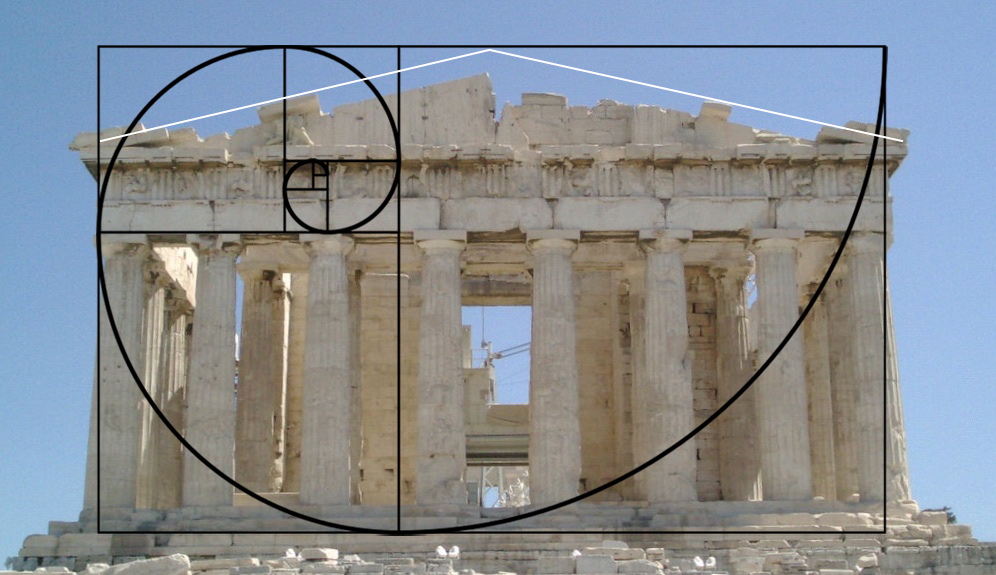Math and Art
I had never thought art and math would go together. It was not until the concept of the Fibonacci Sequence and the Nautilus shell was introduced in my geometry class that I came to the realization of how abstract mathematical concepts can manifest in the stunning beauty of art. The influence of math on art and science was not merely confined to one culture or society. Like non-Euclidean geometry, the fourth dimension primarily symbolized liberation for artists (Henderson 205). We can see also in nature, as the logarithmic spiral depicts the growth and expansion of a tree, and the spiral grows as time progresses ("Fibonacci, Fractals and Financial Markets"). Geometry, nevertheless, has contributed to the creation of various forms of art, such as the golden ratio in architecture and paintings.
Thousands of years ago, in ancient Egypt, the Egyptians applied the theory of the golden ratio in their design of the pyramids (Vesna, 23:00), and even in ancient Greece, the space between the columns formed golden rectangles, trangles, and squares in the famous structure called the Parthenon.
In the early Renaissance, Leonardo da Vinci utilized the concept of the Fibonacci Sequence and the golden ratio to create his art pieces, such as The Last Supper and Mona Lisa, where da Vinci proposed that "... the images of all things are transmitted to the eye by pyramidal lines" (Vesna, 19:55) and develops a mathematical formula to compute the relationship between distance and the eye. From the image below, Mona Lisa, we can see that da Vinci uses a geometric sequence of squares and rectangles with a variety of illusions. If you can notice, once we ease our focus, we immediately notice the eyes and that feature follows our gaze (Weebly: The Fibonacci Sequence).
Concepts like the Fibonacci Sequence and the golden ratio are manifest in art, from nature's spirals to the masterpieces by da Vinci. The interplay between realms enriches our perception of beauty and complexity in the world and sparks boundless creativity, revealing the profound connections between mathematics, art, and science. As Frantz says “Little mathematics was used, but the accomplishment is significant, with the emphasis on the unique, correct perspective viewpoint” (Frantz).
Works Cited:
Frantz, Marc. “Lesson 3: Vanishing Points and Looking at Art.” Unit 2 Resources, 2000, https://bruinlearn.ucla.edu/courses/183769/pages/unit-2-resources?module_item_id=6671235.
Henderson, Linda Dalrymple. “The Fourth Dimension and Non-Euclidean Geometry in Modern Art: Conclusion.” Leonardo, vol. 17, no. 3, 1984, pp. 205-210.
Keller-Baril, Eric. “Mona Lisa.” The Fibonacci Sequence, 2024, https://thefibonaccisequence.weebly.com/mona-lisa.html.
Socionomics Institution. “Fibonacci, Fractals and Financial Markets - Socionomics.net.” YouTube, 31 May 2007, https://www.youtube.com/watch?v=RE2Lu65XxTU.
Vesna, Victoria. “Lecture: Mathematics-pt1-ZeroPerspectiveGoldenMean.mov.” Youtube, 2012, https://www.youtube.com/watch?v=mMmq5B1LKDg.
Images Cited:
Bragg, Melvyn. “BBC Radio 4 - In Our Time, The Fibonacci Sequence.” BBC, 2024, https://www.bbc.co.uk/programmes/b008ct2j.
Keller-Baril, Eric. “Mona Lisa.” The Fibonacci Sequence, 2024, https://thefibonaccisequence.weebly.com/mona-lisa.html.
McKay, Graham. “Parthenon-with-Golden-ratio – misfits' architecture.” misfits' architecture, 10 June 2018, https://misfitsarchitecture.com/parthenon-with-golden-ratio/.



Hi,
ReplyDeleteI love the way you talked about the Fibonacci Sequence and Nautilus shell and how it brought more appreciation between geometry and art. I agree, I had similar experiences in my own geometry class when shapes and the symmetry of the Nautilus shell came about -- I distinctly remember our math teacher having us turn the nautilus shell into an artwork for an assignment to show how math is prevalent in other areas. I am glad that we are able to see such an interesting intersection in our daily and educational lives.
Hi Nan,
ReplyDeleteInteresting Post! As someone who always enjoyed math and saw the world from a mathematic perspective growing up, I always subconsciously knew how intertwined math and art was, but this weeks material really put those concepts in the forefront of my mind, and helped me make direct connections between the two. The golden ratio is an amazing concept that utilizes mathematical concepts to create more precise and representative portraits, such as the Mona Lisa you describe in your post. Its amazing how discoveries like the golden ratio caused a paradigm shift in the art world, and what it allows artists to be able to portray. I wonder what the next significant artist breakthrough will be in our society, and how it may revolutionize the types of art we are able to create!